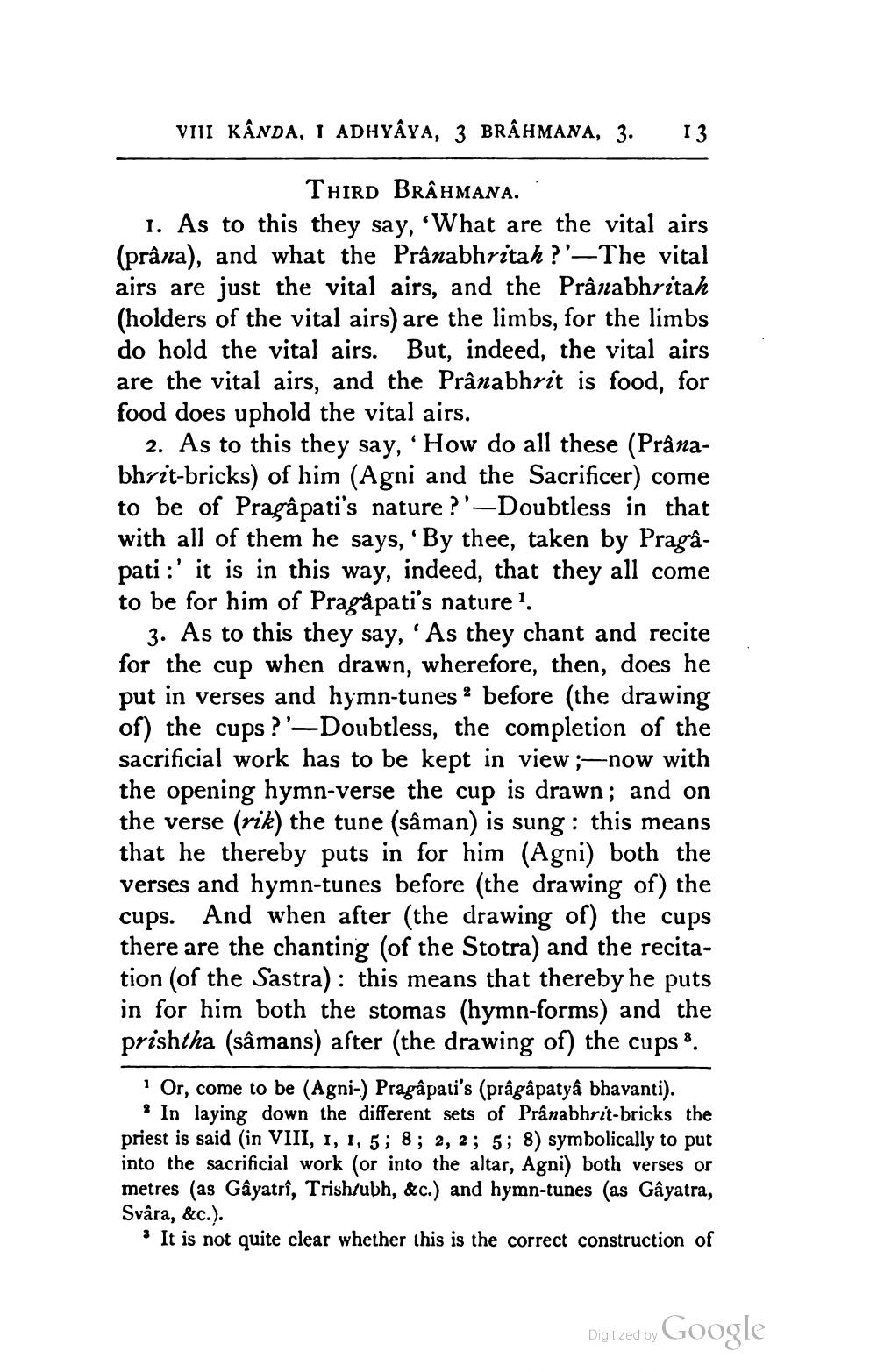________________
VIII KÂNDA, 1 ADHYAYA, 3 BRÂHMANA, 3.
13
THIRD BRÂHMANA. 1. As to this they say, 'What are the vital airs (prâna), and what the Prânabhritah?'—The vital airs are just the vital airs, and the Prânabhritah (holders of the vital airs) are the limbs, for the limbs do hold the vital airs. But, indeed, the vital airs are the vital airs, and the Prânabhrit is food, for food does uphold the vital airs.
2. As to this they say, 'How do all these (Prânabhrit-bricks) of him (Agni and the Sacrificer) come to be of Pragâpati's nature ?'—Doubtless in that with all of them he says, 'By thee, taken by Pragâpati :' it is in this way, indeed, that they all come to be for him of Pragàpati's naturel.
3. As to this they say, 'As they chant and recite for the cup when drawn, wherefore, then, does he put in verses and hymn-tunes ? before (the drawing of) the cups?'-Doubtless, the completion of the sacrificial work has to be kept in view ;—now with the opening hymn-verse the cup is drawn; and on the verse (rik) the tune (sâman) is sung : this means that he thereby puts in for him (Agni) both the verses and hymn-tunes before (the drawing of) the cups. And when after (the drawing of) the cups there are the chanting (of the Stotra) and the recitation (of the Sastra): this means that thereby he puts in for him both the stomas (hymn-forms) and the prishtha (sâmans) after (the drawing of) the cups 8.
Or, come to be (Agni-) Pragâpati's (prâgâpatya bhavanti). * In laying down the different sets of Pranabhrit-bricks the priest is said (in VIII, 1, 1, 5; 8 ; 2, 2; 5; 8) symbolically to put into the sacrificial work (or into the altar, Agni) both verses or metres (as Gayatri, Trish/ubh, &c.) and hymn-tunes (as Gayatra, Svâra, &c.).
3 It is not quite clear whether this is the correct construction of
Digitized by Google




